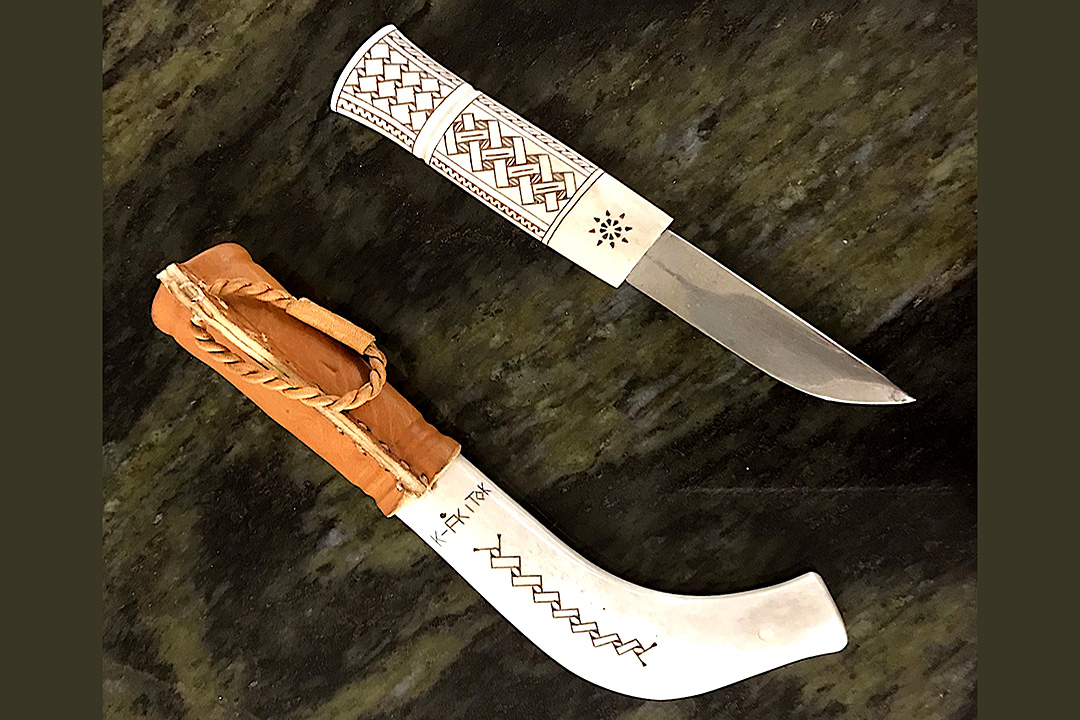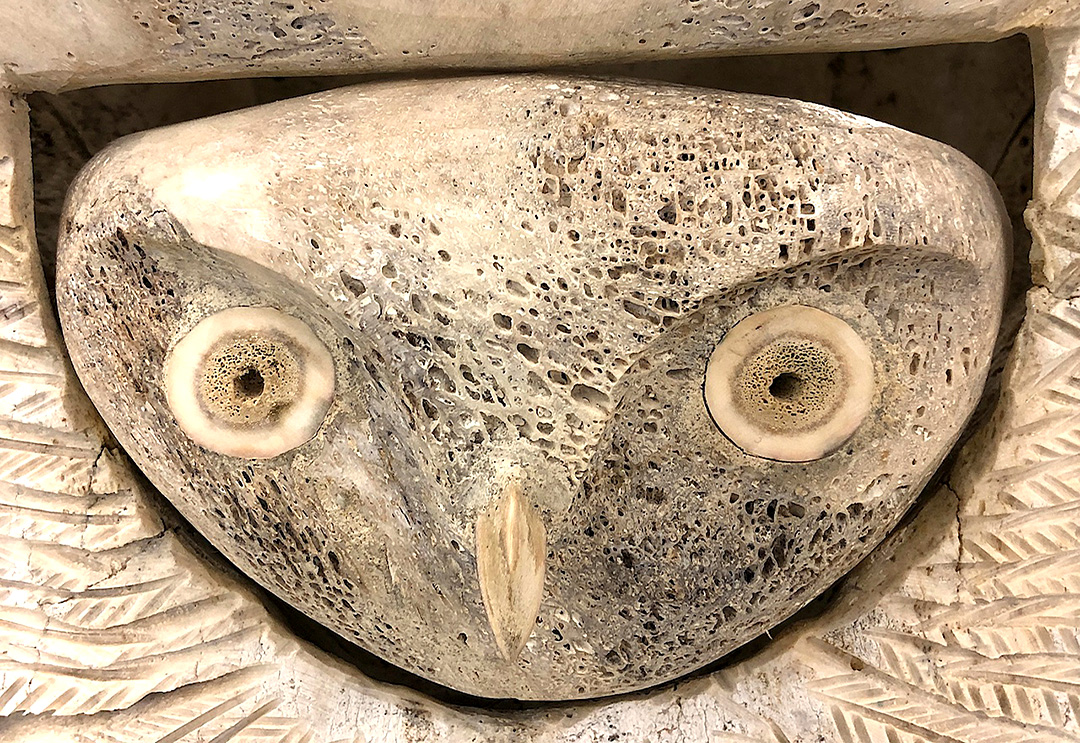
Antlers displayed by representatives of the deer family are of a bone substance that shed and re-grow annually. In the Arctic there are mainly two species, elk (Alces alces) and caribou (Rangifer tarandus). The domesticated caribou are called reindeer. This very durable material is still used today for the making of weapons and tools, for example the handles of knives and knife sheaths (Fig. 1), spoons (Fig. 2) and snow knives, (Fig. 3), also for making jewelry (earrings, lip pegs) and art (Fig. 4). Entire antlers or just individual segments can be used. Entire antlers or just individual segments can be used.

Archaeological finds show that the use of antler by humans has a tradition that goes back a long way. How far, however, is difficult to say, since only under optimal conditions can organic materials be preserved in the soil over such long periods of time. In addition, the inhabitation of the Arctic by reindeer and humans took place at different times depending on the area. Signs of settlement. North of the ArcticCircle are evident in Siberia signs circa 27,000 years ago, in Scandinavia, circa 10,000 years ago and later, Greenland, circa 5,000 years ago.

While Scandinavia and Siberia are known for their reindeer herding, the caribou in North America have always been hunted. In both cases, people moved seasonally with the migrating herds. In Scandinavia this was made more and more difficult by the demarcation of today’s countries. In the 19th century, an attempt was made in Alaska to teach indigenous peoples reindeer. husbandry. For this purpose, neighboring Chukchi from northeast Siberia were brought to Alaska. This attempt failed, due to the traditional intergroup animosity between the Chukchi inland herders and the Alaskan coastal peoples. In the 1890s, reindeer and their owners were hired in Scandinavia and brought to Alaska for another attempt. This project was not very successful, but among other things, it brought the Sami carving tradition and tools to Alaska. A Sami knife with a reindeer antler sheath from the collection of the St. Gallen Historical and Ethnological Museum was collected in Alaska around 1900.

When the Reindeer Act was passed in the United States in 1937, the ownership of reindeer was limited to only the indigenous people of Alaska. Thus the immigrant Sami lost their traditional livelihood. In 1997 the law was repealed and today reindeer ownership is generally allowed.
For the inhabitants of Alaska where elk is found in many areas, working with caribou and reindeer antler is not very important. In Siberia, antler is only moderately popular with artists. One reason is that it never acquired a significant role in art. Walrus ivory is mainly used in the coastal areas, and mammoth ivory is used inland. Due to increasingly stricter species protection regulations for the export of ivory, we have seen a changing trend for some years.

In Scandinavia, working with antler, especially reindeer antler, continues to enjoy great popularity, especially knives with knife sheaths made of antler and bowls (Fig. 5) made of birch wood with inlaid antler decorations are coveted collectors’ items in Scandinavia. Caribou antler has a variety of uses in northern Canada. Cut ends are used as inserts for eyes (Fig. 6), sometimes antler pieces are used as antlers for sculptures of caribou (Fig. 7).

As a very stable, solid and renewable raw material, antler will continue to enjoy some popularity. But while the elk populations around the world seem fairly stable at the moment, the numbers of reindeer and caribou are declining in many places. The traditional grazing grounds and hiking trails are being disturbed and destroyed, mainly through intrusions in the environment, such as the recent clear-cutting of forests in northern Sweden. The future will show whether the antlers of the caribou and reindeer will also be included on the lists of species protection in the future.

Martin Schultz, Museum Cerny / Translation by Martha Cerny





